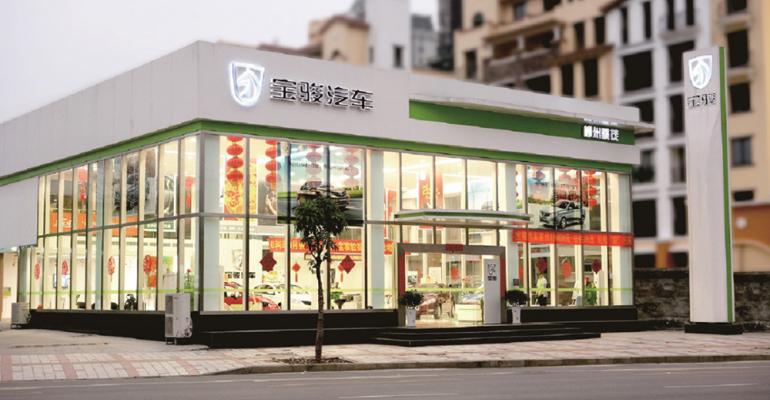BEIJING – The Western media is full of doom and gloom stories about China’s economic slowdown and how that will impact sales in the world’s largest vehicle market.
Stories also dwell on the potential negative impact of policies such as restricting vehicle registration in some cities.
None of that pessimism was evident in China at the Beijing auto show. Automakers and suppliers remain high on the market, though they can’t quite agree on the size of its growth going forward.
“I am optimistic through 2020,” David Xu, executive vice president of Bosch (China) Investment, tells WardsAuto.
He sees China’s passenger-vehicle market growing 7% annually at least through the end of the decade. That will be driven by the current low rate of car ownership in China, Xu says.
Though China’s population tops 1.3 billion, only 60 people per 1,000 own a car, the Bosch executive points out, while the global average is 110 per 1,000.
More than 65% of buyers in China are first-time buyers, Xu says. In Tier 1 cities such as Beijing and Shanghai car ownership is common, but that is not the case in China’s inland cities, where the dream of car ownership is still strong.
“People at least once in their lives want to own a car,” Xu says, “and income keeps going up.”
Automakers are expanding their dealership networks and adding new models and even new brands to their China portfolios to reach consumers in those inland cities.
Ford has pledged to launch 15 new or refreshed models here by 2015. It also will grow its Ford-brand dealership network from about 340 points now to 700 by 2015.
Ford says it is making sure it understands the wants and needs of consumers in different parts of China. It expects the overall market to grow about 7.5% this year, a pace it is happy with.
“The rate it was growing in the past was not sustainable,” Ford China Chairman and CEO John Lawler says here.
Tier 2, 3 Cities Expected to Drive Sales for GM
That is a common refrain. General Motors expects market growth to be “more modest, but more sustainable,” agrees GM China President Matt Tsien.
The automaker still expects to sell up to 3.5 million vehicles in China this year in a total market of some 24 million. GM’s joint ventures will invest $12 billion over the next three years, Tsien says, setting the automaker on a path to boosting local manufacturing capacity 65% by 2020.
GM is counting on sales in China’s Tier 2 and 3 cities to boost sales of its Buick, Chevrolet and Cadillac brands. For even smaller cities, it has Baojun, the new brand out of SGMW, its joint venture with Wuling and SAIC.
“Baojun was introduced to take advantage of a growing customer base,” says Ray Bierzynski, executive vice president for SGMW.
The brand launched two new models at the Beijing show. Baojun sales could double this year to 200,000, Bierzynski says.
Consumers buying replacement vehicles or a second car will further expand the market in China, Tsien says. GM figures that could account for 80% of purchases in Tier 1 cities such as Beijing.
GM also will add to its dealership network. Buick was the first brand GM produced in China and its network is “good,” Tsien says, but “Chevy and Cadillac need build-out.”
As for government restrictions on the number of cars licensed or sold in some of China’s cities, few expect that to have a significant impact on overall growth.
People find ways to get a license plate, such as buying the car in a nearby town, says Jack Cheng, China country manager at Magneti Marelli (China). “It won’t stop people from buying cars.”
Any slowdown in luxury-car sales due to a central government call for less conspicuous consumption by China’s ruling class also doesn’t worry Cheng.
“Government fleet purchases may be more under control, but that means more private owners,” he says. Cheng figures the car market could grow 10% annually for the next three years.
Tom Tan, president of BorgWarner (China) Investment, sees China’s market growing 8% this year. While that’s down from last year’s 14%, he is unfazed.
Some 22 million light vehicles were sold in China last year, Tan points out. “Think about the size of the market,” he says, adding, “We are confident we will outgrow the market because of our technology.”





